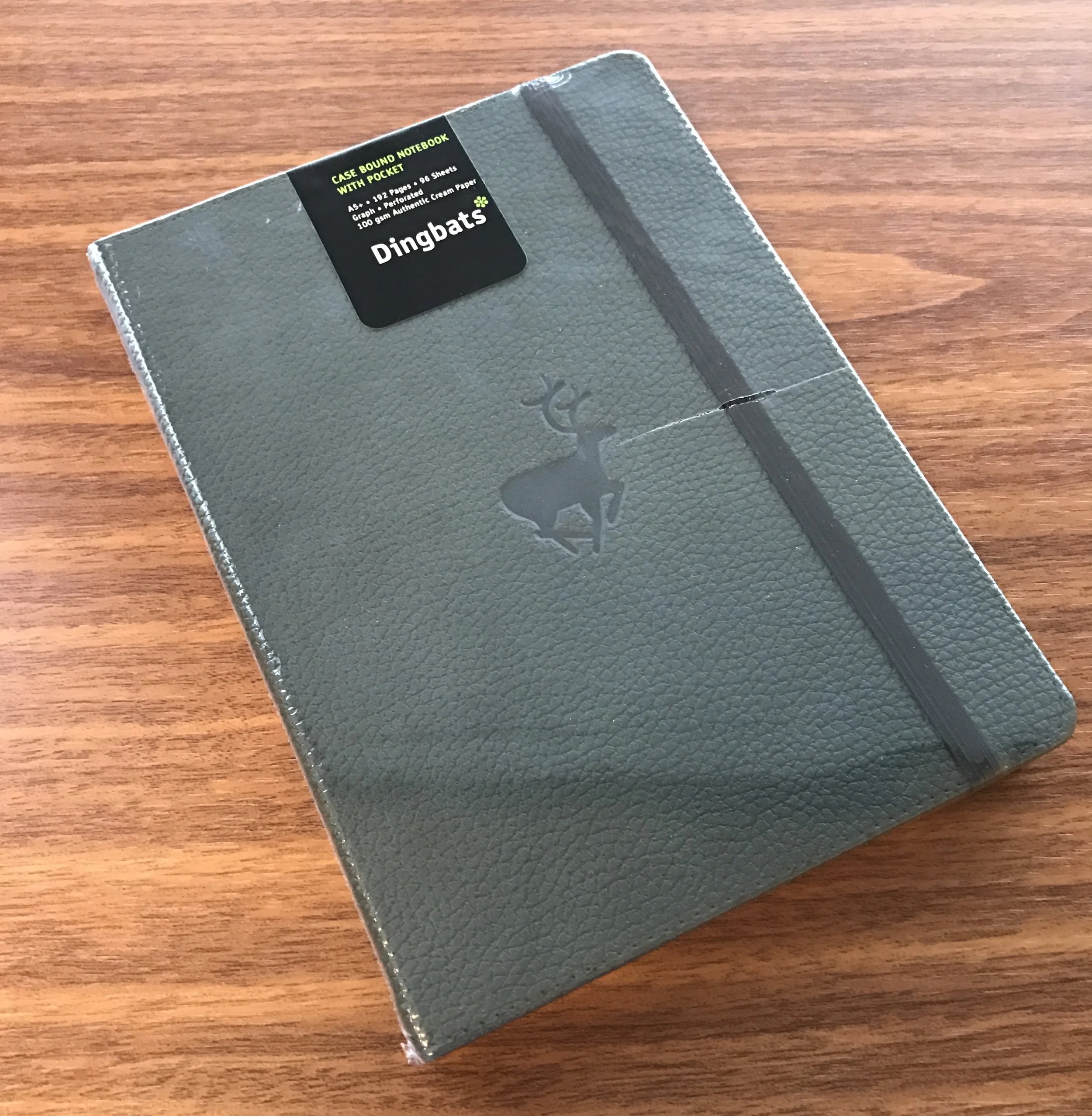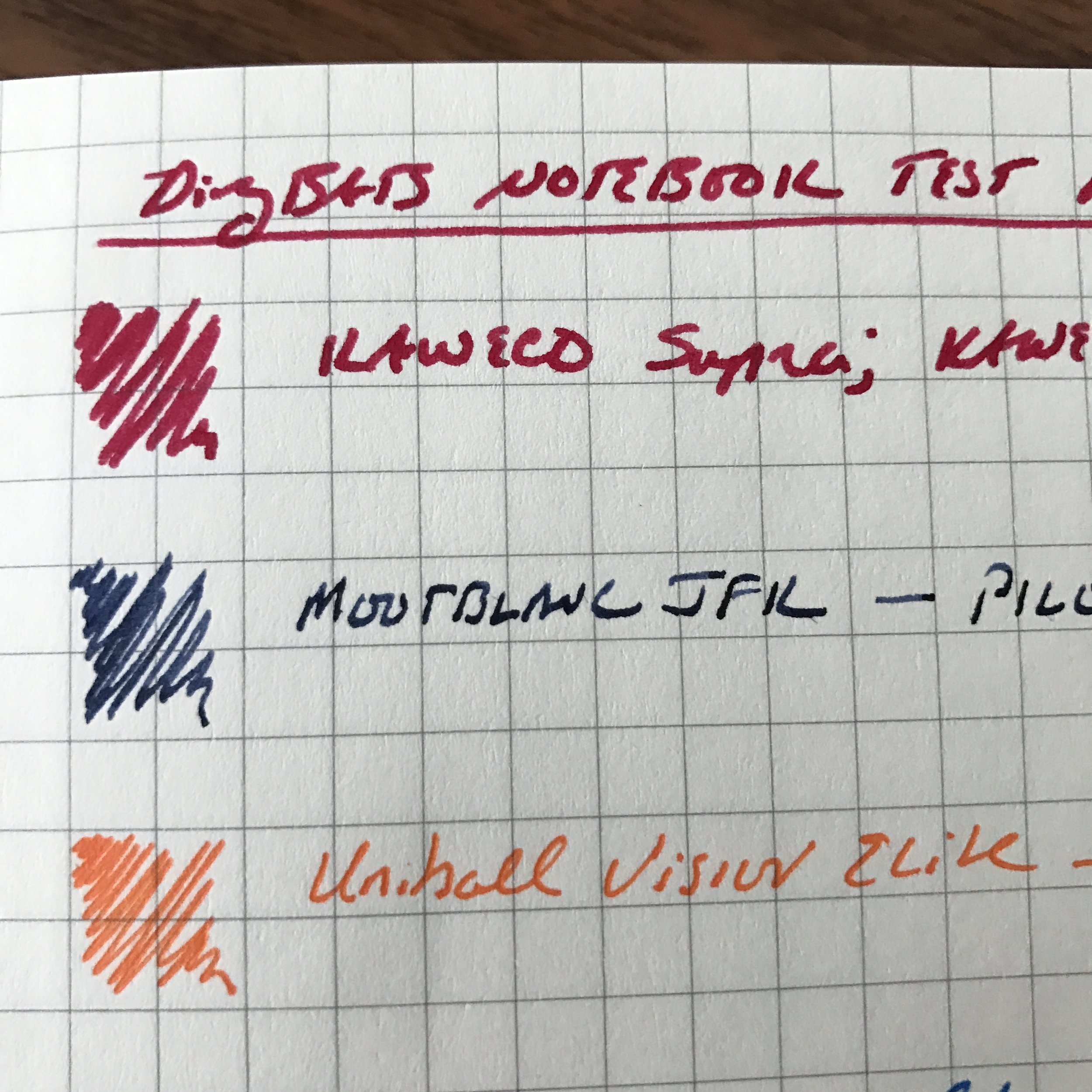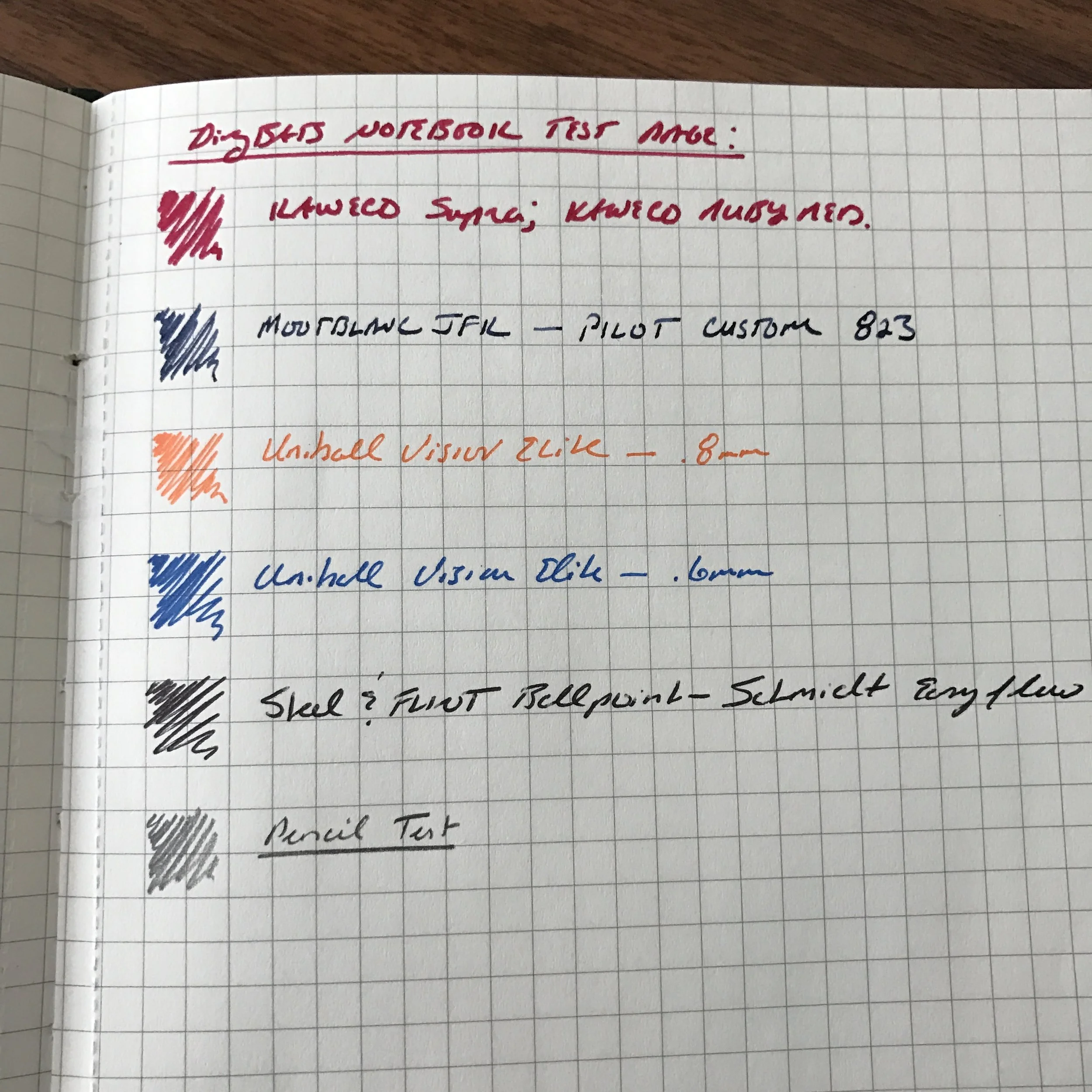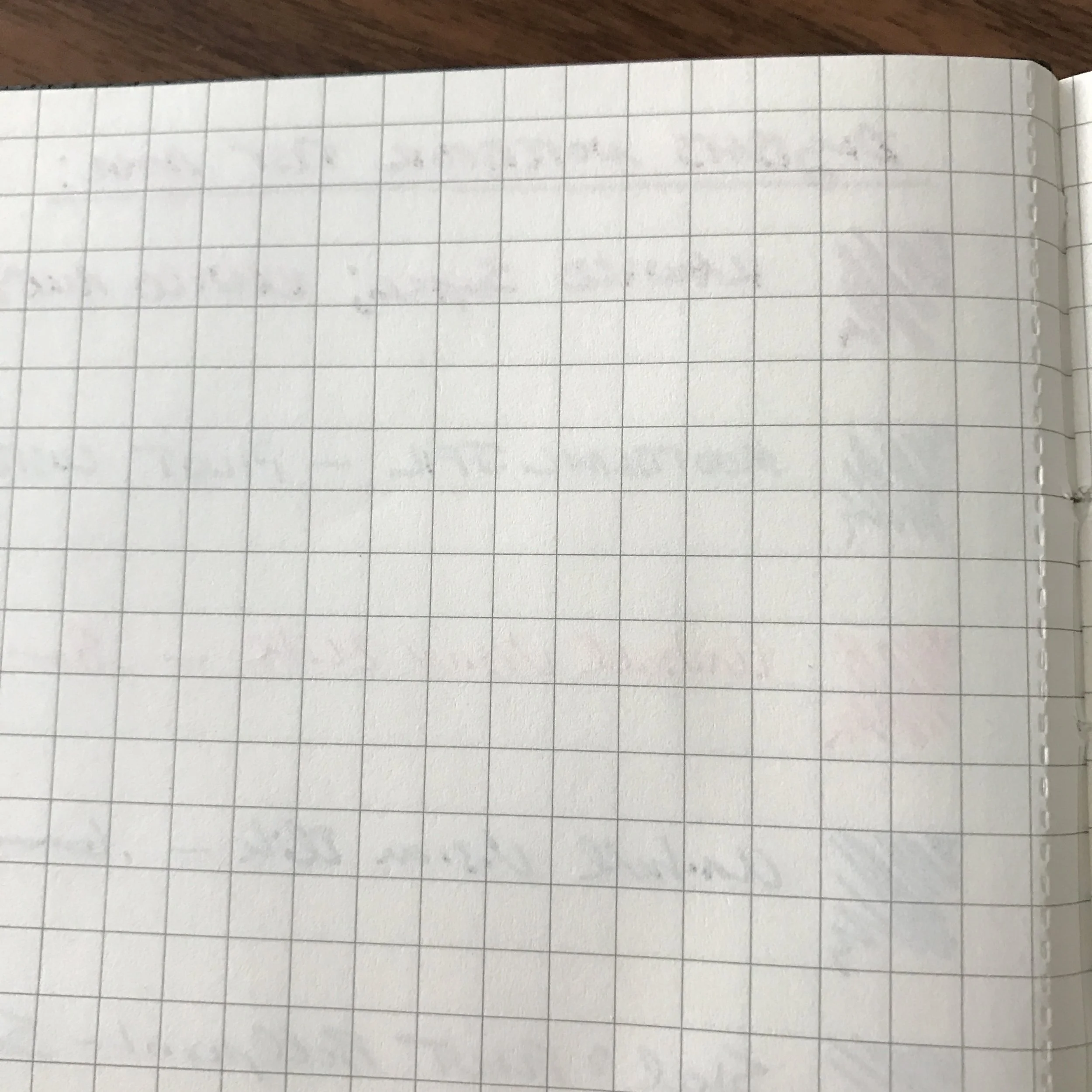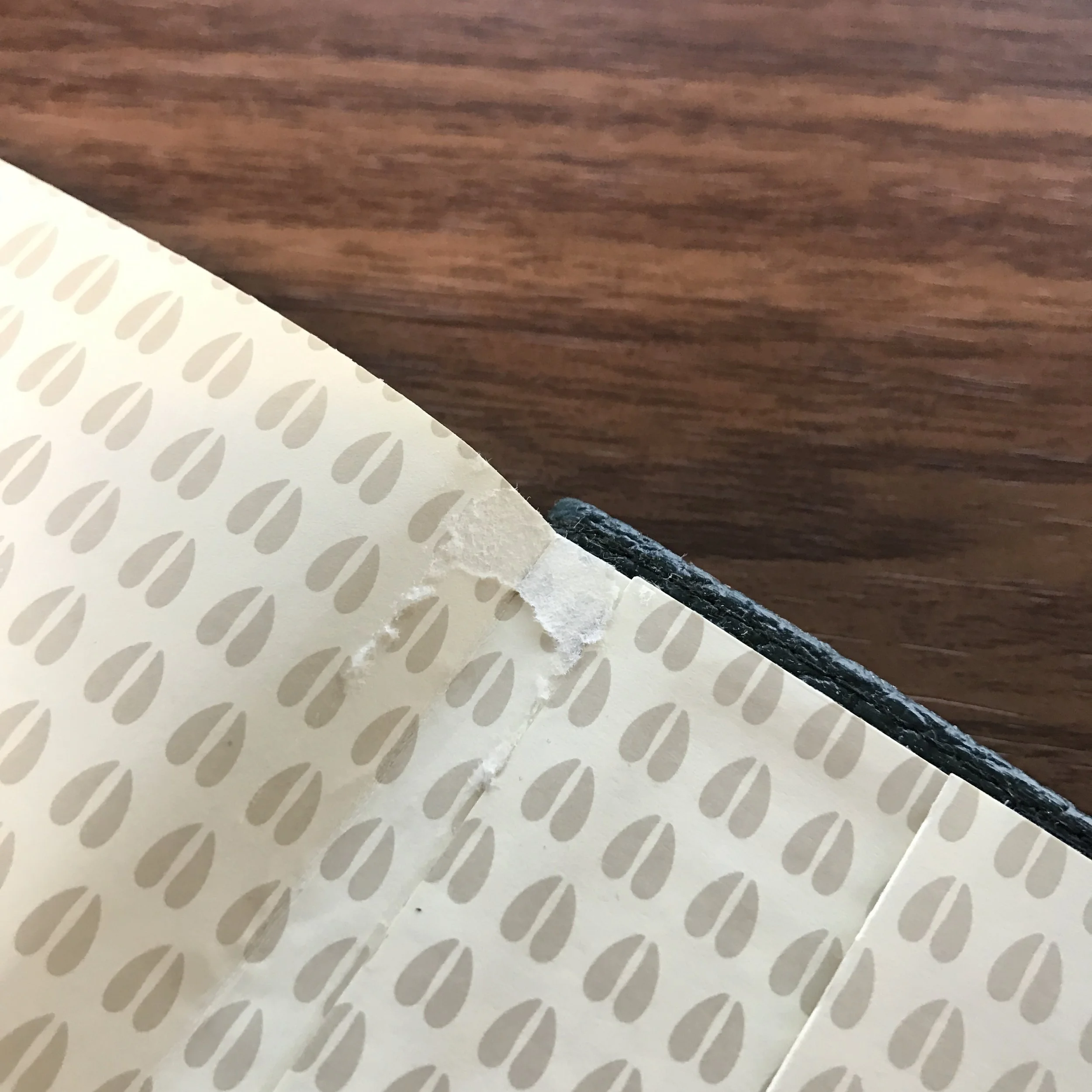I continue to be amazed at the sheer number of new stationery brands being brought to my attention on a near-daily basis. A few weeks ago I was asked to review a new notebook from Lebanon, marketed under the name of Dingbats*. Dingbats* (the asterisk is part of the name) launched a Kickstarter project that did not fund, but they still managed to get their notebooks manufactured and have diligently been working to gain visibility in an increasingly crowded notebook/stationery market.
According to their website, Dingbats* notebooks are manufactured by hand in Lebanon. Mohamad, the proprietor, is a descendant of one of the oldest established Lebanese stationery companies, who now looks to carry on his family's business for another generation. This bit of history makes these notebooks unique to me and immediately piqued my interest.
One great feature of the Dingbats* notebook is that it lays completely flat when open.
The Dingbats* notebook features a very soft synthetic leather cover embossed with an animal design, 100gsm cream/ivory paper, and all the other trappings of the modern, "nice bound notebook": inner pocket, elastic closure, and ribbon bookmark. What interests me about these Dingbats* books, and what will likely set them apart in the larger market, are (1) a pen loop; (2) the fact that all 96 sheets are micro-perforated, allowing you to easily remove pages from your notebook for scanning, filing, shredding, etc.; and (3) a reliable lay-flat design. Be aware that these notebooks are slightly larger than your standard A5 (It's labeled A5+), measuring 8.4 x 6.3 inches. I suspect they will not fit an A5 notebook cover, if you are looking for a refill.
The inner pocket on the back cover. Check out the pattern on the end paper!
So how does the Dingbats* notebook write? In short, it's a good notebook that I would characterize as fountain pen friendly and will play nice with most of your other pens and pencils. I really tried to push the paper, pressing down hard with a fairly wet medium nib, and was only able to get the slightest hint of show-through on the other side. There was no noticeable feathering or bleeding.
My only critique of this notebook is that mine has some minor issues with the glue on the binding. Some of the pages were stuck together, so in a couple instances I had to manually separate them in order to get the notebook to lay completely flat. There was a similar issue with my back inside cover, where glue appears to have leaked out from under the inner pocket and caused the heavier stock paper of the end pages to stick together. None of this impacts the functionality of the notebook, of course, and I've noticed similar issues in first-generation products from other brands as well (like the Baron Fig Confidant). I'd expect to see these issues get worked out in the future.
Update: I heard back from Dingbats*, and they confirmed that the glue issue was a problem with a small number of notebooks from their initial batch, that should no longer be in retail channels. In other words, this shouldn't be an issue going forward.
Takeaways and Where to Buy
Dingbats* makes a nice leather notebook that I think I'll enjoy using once I finally finish this Leuchtturm 1917 I've had going for a while. The paper is heavy enough stock to use with most pens, and I LOVE the perforated pages. While the book I received had a few hiccups, I'm not a notebook perfectionist (I pretty much destroy them, after all) so this wouldn't stop me from buying/using more Dingbats* notebooks. Honestly, if I didn't already have notebooks coming out my ears, I probably would pick up a couple more to stash away.
Dingbats* notebooks are sold via Amazon. The medium notebook featured in this review sells for $20, which is fairly standard for this type/quality of product. Dingbats* offers other sizes as well, including a much larger "A4+" (11.8 x 8.5), a top-bound "A6+" (4.1 x 6.1), and some "pocket" A6 notebooks (5.5 x 3.5). Please check them out and give them a try.
Disclaimer: Dingbats* sent me this notebook for review purposes, at no charge.
